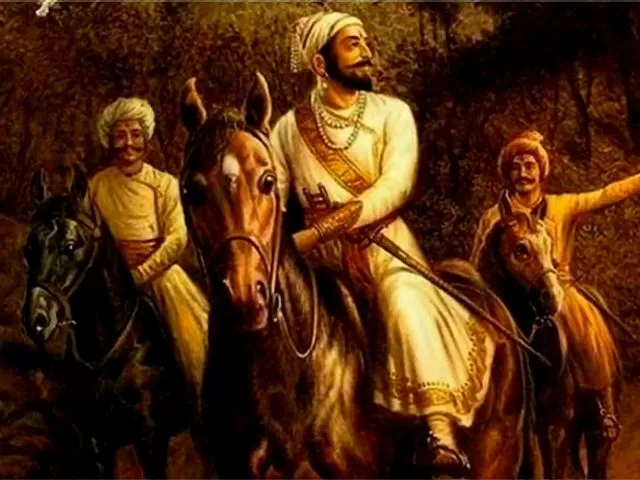

Chhatrapati Shivaji Maharaj Biography: History and Administration
Chhatrapati Shivaji Maharaj Biography: Chhatrapati Shivaji Maharaj was brave and had an immaculate personality in Indian history. Shivaji Maharaj was the warrior king and famous for his bravery, tactics and administrative skills. He always focussed on Swarajya and Maratha heritage. He was the descendant of the 96 Maratha Clans well known as 'Kshatriyas' or brave fighters.
Ahead of his 392nd birth anniversary of Chhatrapati Shivaji Maharaj, a new statue will be unveiled at the Kranti Chowk in Aurangabad. Maharashtra Chief Minister Uddhav Thackrey will attend the unveiling of the statue of Chhatrapati Shivaji Maharaj on February 18 at midnight. His son and Maharashtra cabinet minister Aditya Thackeray and Aurangabad district guardian minister Subhash Desai will also attend the event. The statue carved by Pune-based sculptor Deepak Thopate will be placed on an elevated foundation.
Born in Pune’s Shivneri Fort in 1630 on February 19, Shivaji was the son of Shahji Bhosle and Jija Bai. He was brought up at Poona under the supervision of his mother and Brahmin Dadaji Konda-dev who made an expert soldier and an efficient administrator. His administration was largely influenced by Deccan administrative practices. He appointed eight ministers who were called ‘Astapradhan’ who assists him in the administrative helm of affairs.
— Hindu History (@HindutvaItihas) February 19, 20211.
Chhatrapati Shivaji's Life at a Glance
The beginning of the 17 th century witnessed the rise of new Warrior class Marathas when the Bhonsle family of the Poona district got military as well as a political advantage by the Ahmadnagar kingdom that gets the advantage of being local. Therefore, they took privileges and recruited a large number of Maratha sardars and soldiers in their armies. Shivaji was the son of Shahji Bhosle and Jija Bai. Shivaji was brought up at Poona under the supervision of his mother and an able Brahmin Dadaji Konda-dev. Dadaji Konda-dev made Shivaji an expert soldier and an efficient administrator. He also came under the religious influence of Guru Ramdas, which made him proud of his motherland.
1. Conquest of Torana: It was the first fort captured by Shivaji as Chieftain of Marathas which led to the foundation of his ruling attributes of valour and determination at the age of 16. This conquest drives him to capture another like Raigarh and Pratapgarh. Due to these conquests, the Sultan of Bijapur was getting panic and he put Shahji, Shivaji's father in prison. In AD 1659, Shivaji again tried to attack Bijapur then the Sultan of Bijapur sent his general, Afzal Khan, to capture Shivaji. But Shivaji managed to escape and killed him with a deadly weapon called Baghnakh or the tiger's claw. Finally, in 1662, the Sultan of Bijapur made a peace treaty with Shivaji and made him an independent ruler of his conquered territories.
2. Conquest of Kondana fort: It was under the control of Nilkanth Rao. It was fought between Tanaji Malusare, a commander of Maratha ruler Shivaji and Udaybhan Rathod, fort keeper under Jai Singh I.
3. Coronation of Shivaji: In AD 1674, Shivaji declared himself as an independent ruler of the Maratha Kingdom and was crowned as Chhatrapati at Raigarh. His coronation symbolises the rise of people who challenges the legacy of the Mughal’s. After the coronation, he gets the title of ‘Haidava Dharmodharka’ (Protector of Hindu faith) of the newly formed state of Hindavi Swarajya. This coronation gives a legitimate right to collect land revenue and levy tax on the people.
4. Alliance with Qutub Shahi rulers Golconda: With the help of this alliance, he led the campaign into Bijapur Karanataka (AD 1676-79) and conquered Gingee (Jingi), Vellore and many forts in Karnataka.
Shivaji’s administration was largely influenced by Deccan administrative practices. He appointed eight ministers who were called ‘Astapradhan’ who assists him in the administrative helm of affairs.
1. Peshwa was the most important minister who looked after the finance and general administration.
2. Senapati (sari-i-naubat) was one of the leading Marathas chiefs who were basically posted of honour.
3. The Majumdar was an accountant.
4. The Wakenavis is one who looks after the intelligence, post and household affairs.
5. The Surnavis or chitnis assist the king with his correspondence.
6. The Dabir was the master of ceremonies and helps the king in his dealing with foreign affairs.
7. The Nayayadish and Punditrao were in charge of justice and charitable grants.
8. He levies the tax on the land which was one-fourth of the land revenue i.e. Chauth or Chauthai.
9. He was not only proved to be an able general, a skilful tactician, and a shrewd diplomat, he also laid the foundation of a strong state by curbing the power of the Deshmukh.
Hence, the rise of Marathas was due to economic, social, political and institutional factors. To that extent, Shivaji was a popular king who represented the assertion of popular will in the area against Mughal encroachment. Although, Marathas were ancient tribes but17 th century gave them space to declare themselves as ruler.
Get here current GK and GK quiz questions in English and Hindi for India, World, Sports and Competitive exam preparation. Download the Jagran Josh Current Affairs App.